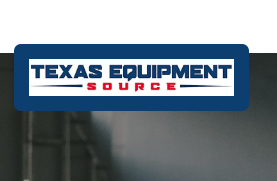Soil erosion is an environmental disaster that is faced by different regions around the globe. This process of nature can lead to the removal of topsoil, which is a source of nutrition, a decrease in agricultural productivity, and a man-made disaster in the environment. Nevertheless, findings suggest that there are effective answers to this issue. The use of Tarpaulin is one of those effective solutions.
Soil Erosion and Its Importance
Soil erosion is a phenomenon when the top layer of soil is displaced by natural agents such as wind or water. Human activities can still hasten this process. The results of soil erosion are far-reaching. They include such havoc that can be easily seen e.g., lower soil fertility because of the poor quality of soil, small crop yields, and the problem of increased sedimentation in water bodies.
Uses of Tarpaulins for Preventing Erosion
Tarpaulins, short for tarps, are made from polyethylene and canvas, so they are durable and can be used for various purposes. These sheets can effectively combat soil erosion. Tarpaulins are able to act as a protective wall of defense that stands between the soil and the erosive forces.
Introducing Tarpaulins for Exposed Soil Protection
First of all, tarpaulins save by covering the exposed soil which is one of the essential ways of preventing soil erosion. This is especially true in construction sites or areas that have been cleared of vegetation. The covering of the soil is a shield against the rain and wind. This process defends the land from being eroded thus it greatly reduces the risk of erosion.
Water Runoff Control
Using tarpaulins, we can simply set the area up so that water ends up going away from it instead of staying on it and causing problems. The tarp can be used to make a channel or a barricade to point water to the right place. This helps stop the erosion process of rills and gullies. These are some of the most common features of soil erosion by water.
Soil Stabilization Using Tarpaulins
For the hilly area, tarpaulins can be effectively used to consolidate soil. They can be fixed over the slope so that soil is not allowed to move. This is particularly crucial in places where there is the danger of landslides or where there is no vegetation yet.
Tarpaulins: Different Types Used for Erosion Control
There are different types of tarpaulins for soil erosion control. Every kind has its specific applications and benefits.
Polyethylene Tarps
These can be used temporarily since they are light, water-resistant, and it won’t trouble the environment. The polyethylene tarps are often used in construction sites or for temporary landscaping projects.
Geotextile Fabrics
These are tarps that are purposely made to stabilize soil. They allow for water pass-through while still maintaining the soil in the first place. Geotextile fabrics are often used for long-term erosion control projects.
Biodegradable Tarps
Their material is natural, hence they are biodegradable. The biodegradable tarps provide an instant solution to erosion, but over tim,e they break down into the soil. Areas that do not have the requirement of permanent synthetic materials are the ideal places for biodegradable tarps.
Application of Tarpaulins for Erosion Control
The appropriate use of Heavy Duty Tarpaulin for erosion control demands good planning and implementation. Here are some of the primary steps:
Situation Evaluation
The first step is to check the site. This involves the identification of risky erosion areas. Slope, soil type, and water flow patterns are some of the factors that will be needed.
Selection of Tarp
Choose the kind and color of the tarp that is most suitable for the environmental requirements of the specific place. In addition, factors such as the strength of the tarp, the permeability of the tarp, and the lifespan of the tarp (if needed) must also be considered.
Right Assembly
Tarps need to be assembled in such a way that they can do their job well. Sometimes, securing the edges may not be sufficient, and overlapping more tarps may be required for larger slopes.
Conclusion
Tarpaulins are an efficient and functional alternative for preventing soil erosion. By covering unprotected soil, redirecting water runoff, and stabilizing slopes, tarps act as a barrier to natural erosive forces, preventing erosion. Tarps come in all different types, including polyethylene, geotextile, or biodegradable. Each type has its advantages depending on the environment and application. Tarps will maintain soil fertility, create sediment catchment in the short term, and protect land from long-term damage with proper selection and installation. Overall, tarpaulins are an excellent benefit to sustainable erosion control practices.







0 Comments